How many ways are there to plant a fruit tree? Quite a few, it appears! I’ve been reading up on the topic, reading such books as The Apple Grower, Creating a Forest Garden, Edible Forest Gardens and The Backyard Orchardist.
Seems like there are as many ways to plant a fruit tree as there are books on the subject. I went with a combination of what I’ve read and feel pretty good about it. The pages below are from the books “The Apple Grower” and “Edible Forest Gardens volume 2”.
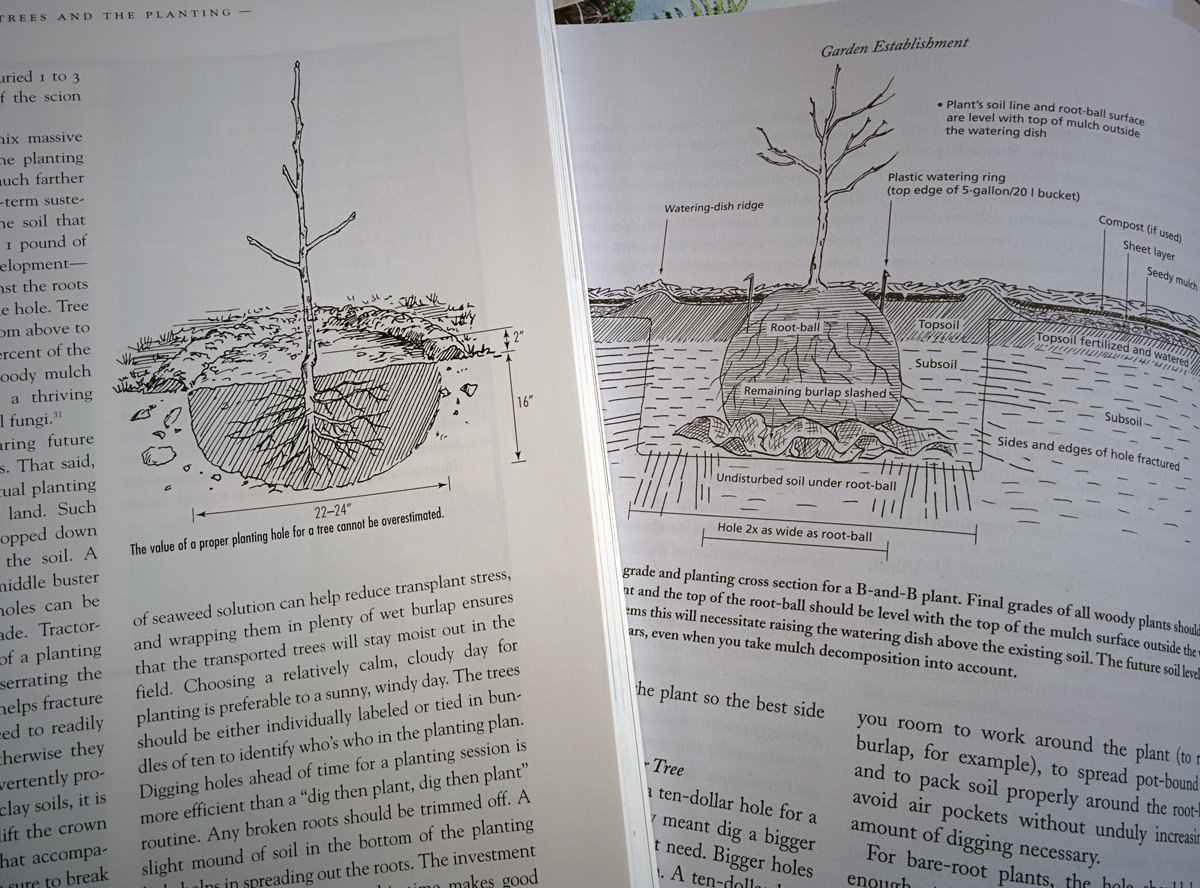
The conclusion? Proper holes, mycorrhizal fungi inoculation, molasses and seaweed concentrate makes for a good start in life. I’ve planted one tree and have three more apple trees to plant, as well as a plum tree.
The apple trees I’m planting are grafted onto Antonovka seedling rootstock, which may grow larger than are practical (7m) but on the other hand they can live 100+ years and are more resilient than more dwarfing rootstocks.
There’s a special feeling about planting trees that not only my 10 month daughter will enjoy but likely also HER grandchildren.
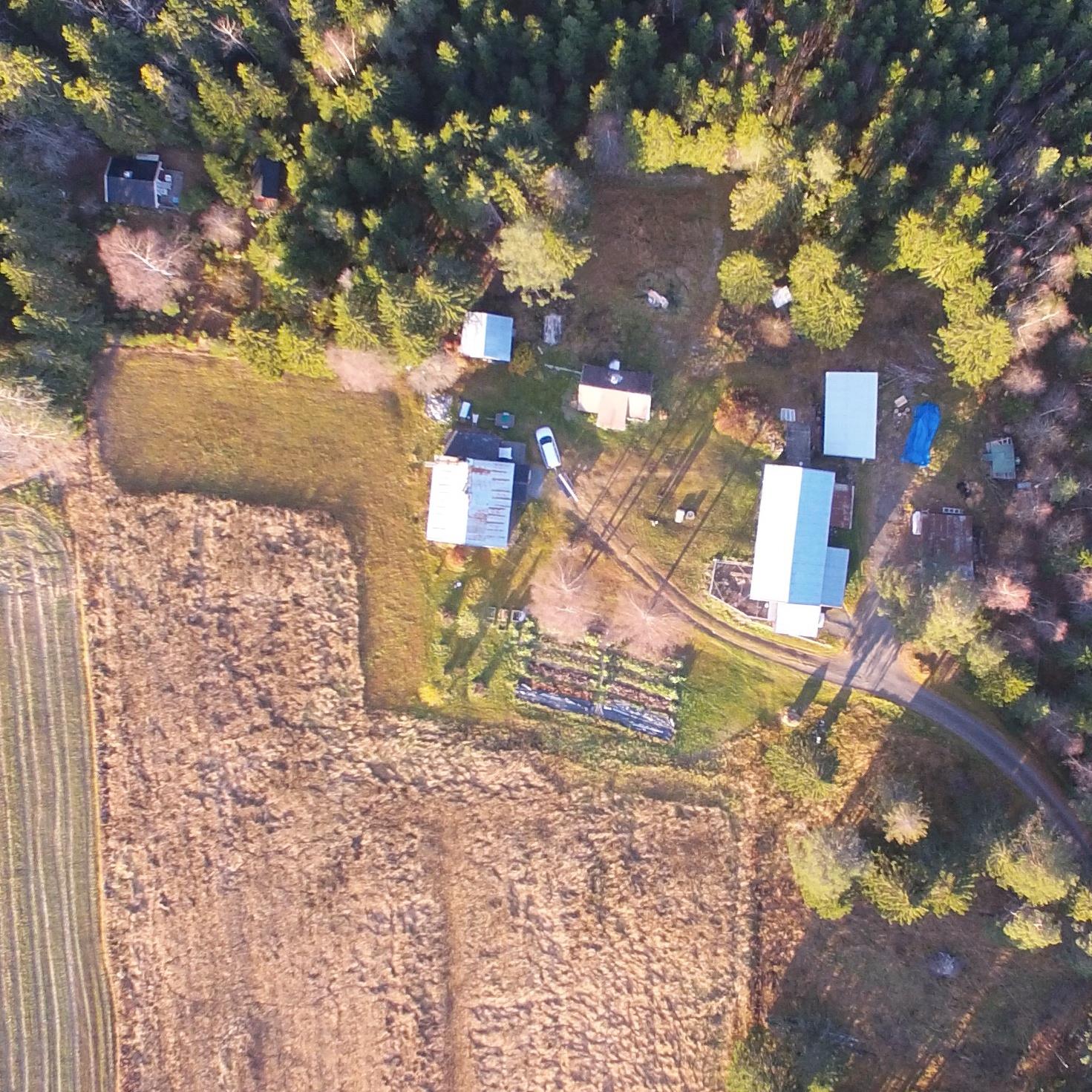
The forest garden will be to the left of the house on the field that’s sticking up. It’s roughly an area of 30 x 20 meters, i.e. 600 sq. meters. I’m not sure if I’ll ever plant the whole area, I’m starting small and will just take it season by season and let it grow as I find interesting plants to fill it with.
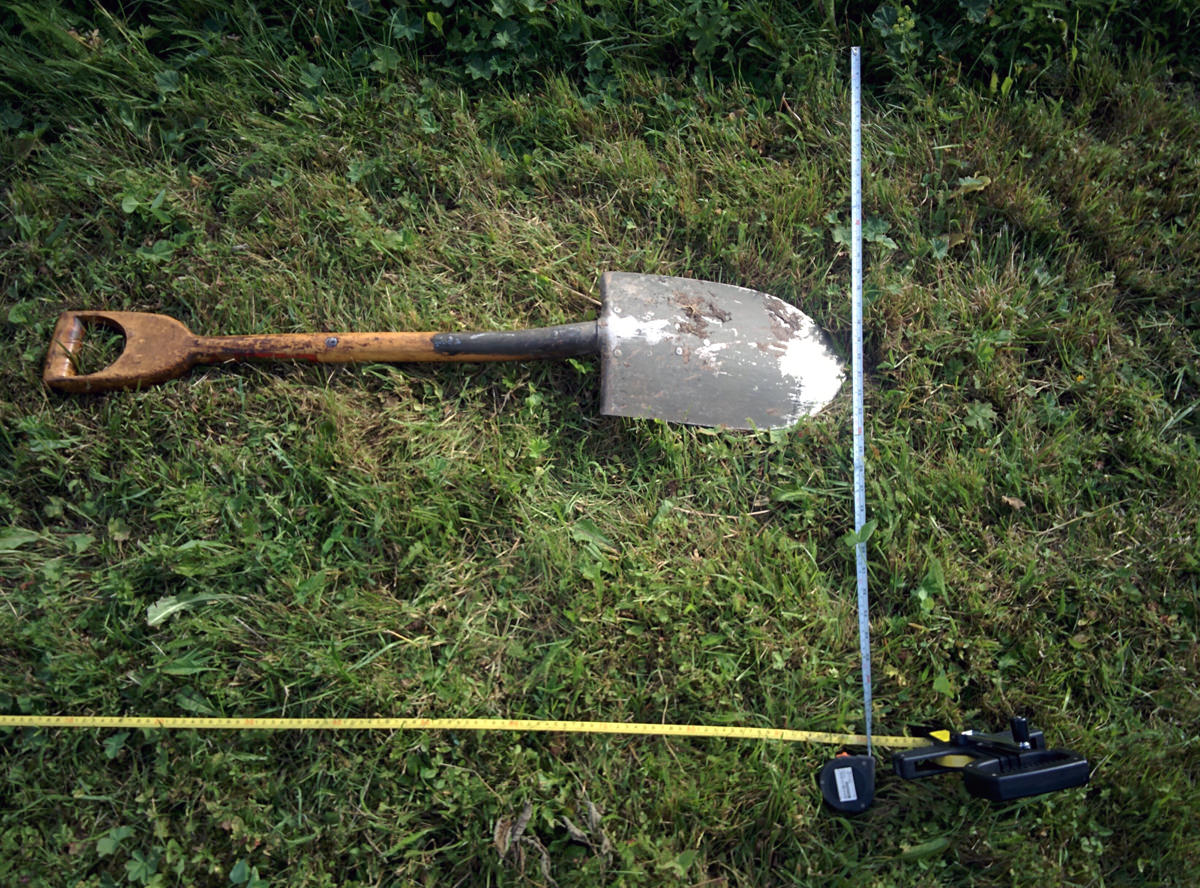
Measuring out the 1 m hole
There were a lot of anxiety involved with choosing the exact location for the very first tree in my forest garden. I didn’t want it too close to the house because as mentioned apple trees on Antonovka root stock grows quite large and can cast a long shade. So I ended up planting it 12 meters from the house, lined up with a window in the house so we can see the apple tree from our kitchen and living room.
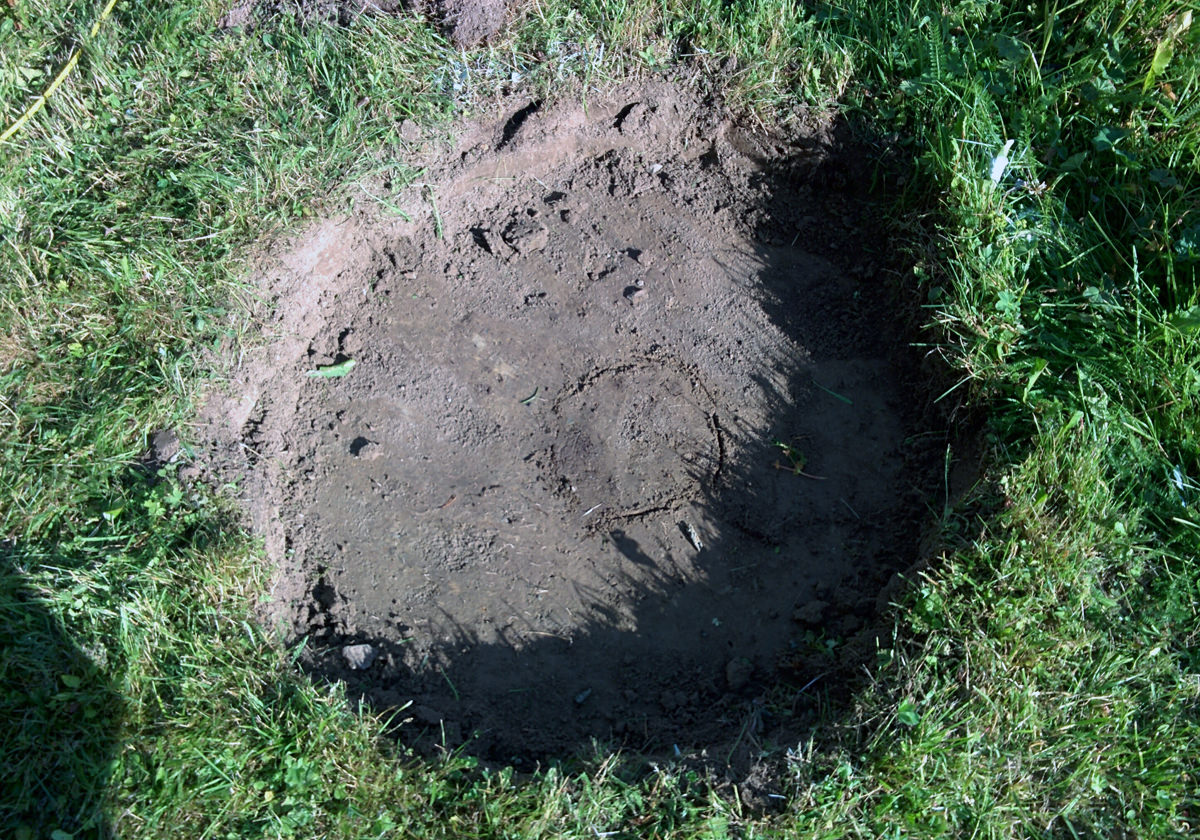
Dig a $10 hole for a $1 tree.
Again, a proper planting hole is key for good establishment. Edible Forest Gardens recommends a hole 2x the size of the root ball. I dug an even larger hole of 1 meter in diameter, roughly 3x the width of the root ball, because the tree was fairly large with long roots that needed the extra room.
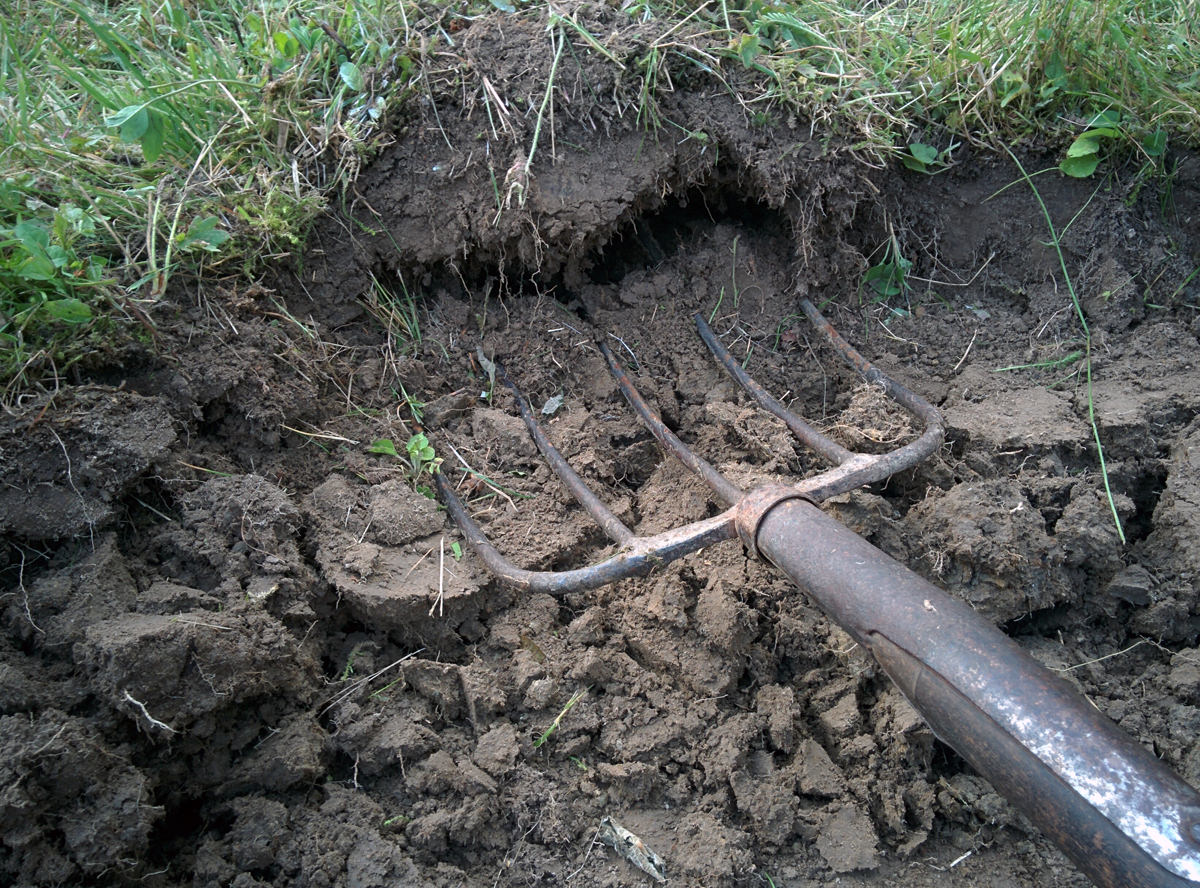
Breaking up the soil
Breaking up the compacted soil on the sides and bottom of the planting hole is a good tip to make it easier for the roots to spread down and into the surrounding soil. I left the ground right under the tree as is to prevent settling of the tree.
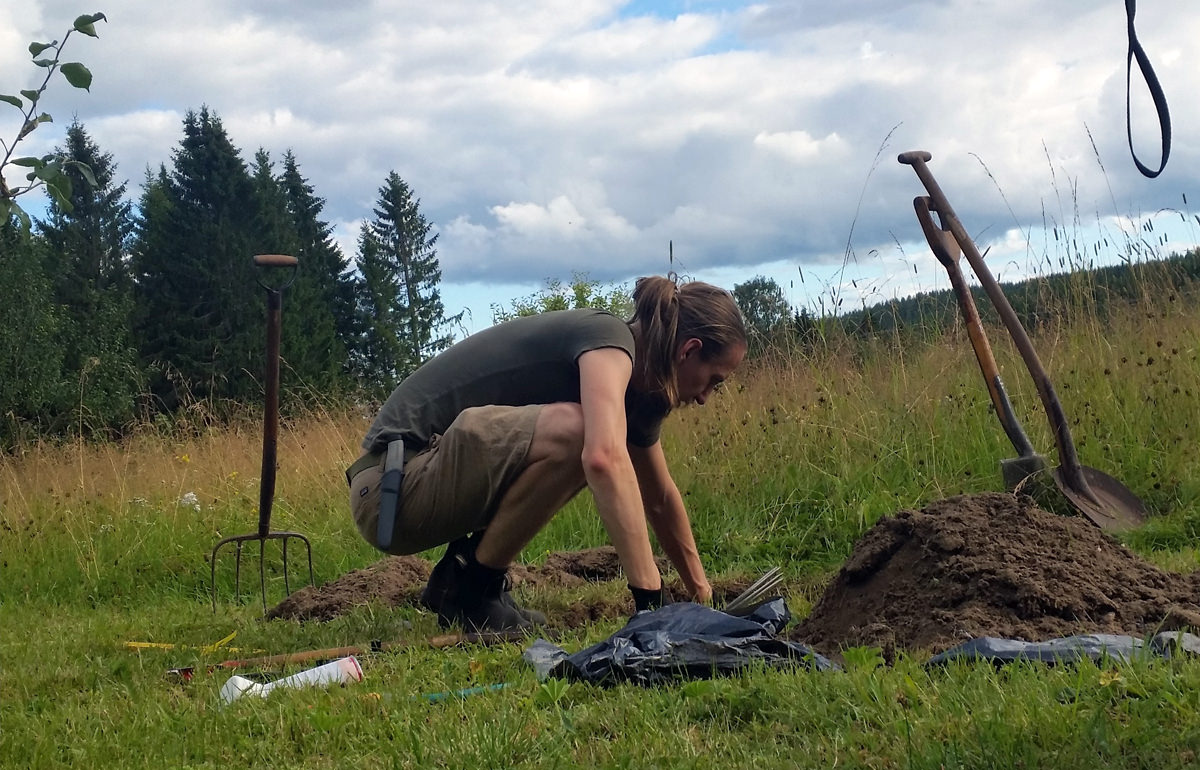
Do try to have better ergonomics when planting. Bend your knees, not your back. I can improve in that area. Good tools to have on hand when planting a tree is a good shovel, a pitchfork, some tarp to put the soil on while digging (otherwise a lot gets lost in the lawn), a wheelbarrow, and a large bucket for watering in the tree afterwards.

Spreading the roots
Spreading out the roots of the apple tree is an important step in planting. Curled roots, as I had on this tree, can eventually strangle the tree as they grow.

Mycorrhizal fungi
I used mycorrhizal fungi when planting, as recommended by Richard Perkins at Ridgedale Permaculture. Mycorrhizas are beneficial fungi growing in association with plant roots, and exist by taking sugars from plants ‘in exchange’ for moisture and nutrients gathered from the soil by the fungal strands. The mycorrhizas greatly increase the absorptive area of a plant, acting as extensions to the root system. Bare root plants can be dipped in a solution, but I had a container grown plant so I sprinkled the inoculant over the roots in the planting hole.
Combined with the mycorrhizal fungi inoculant I watered in the tree with a mix of sugar molasses and seaweed concentrate. 3.5ml of concentrated kelp extract, the recommended dosage. I used roughly 1 cup of sugar molasses to 10 liters of water.
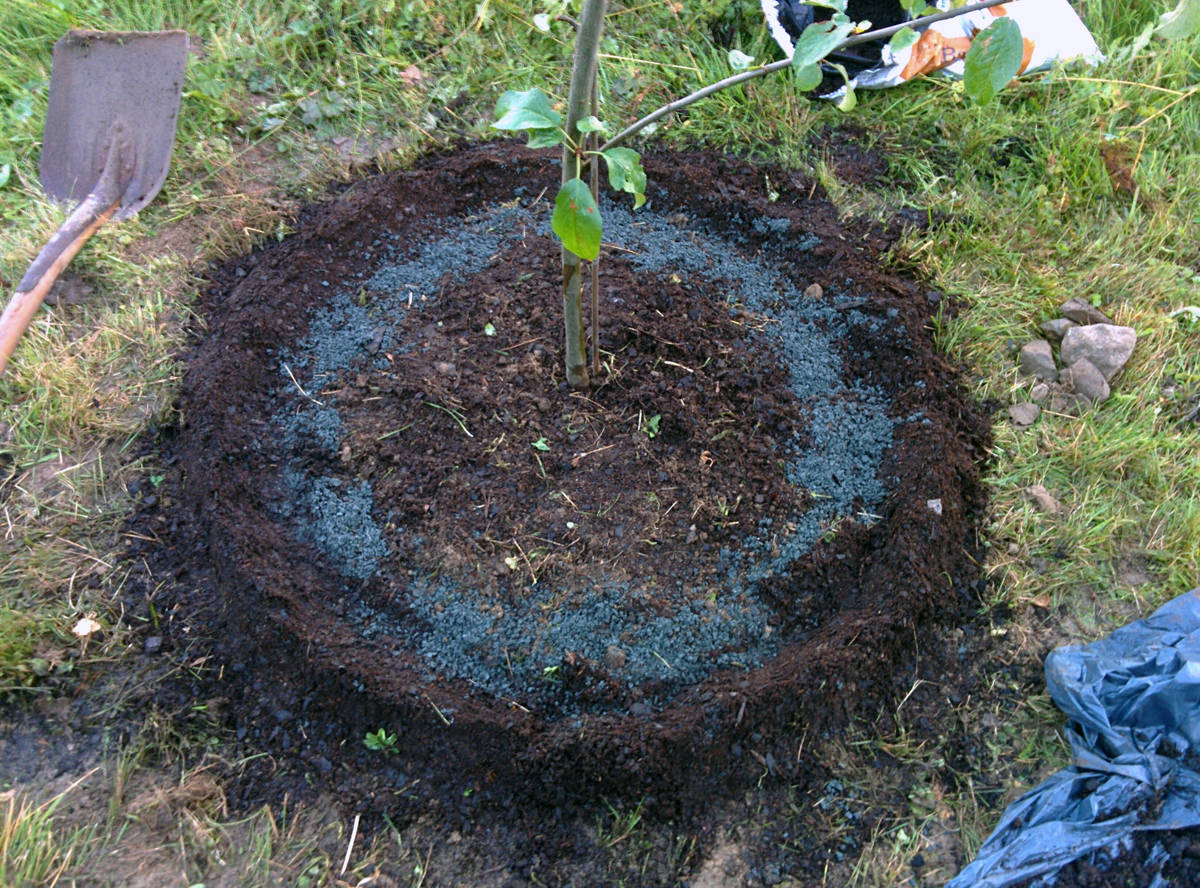
Rock dust application
The only other soil amendment I used was rock dust that will provide a long term boost in minerals.
That’s it! Now I have four more trees to plant, as well as a cherry bush. Stay tuned for more updates on this developing forest garden.


